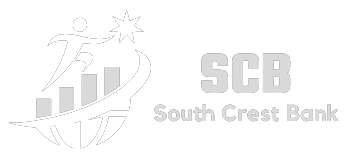Budgeting and Forecasting
In the fast-paced world of business, it’s easy to get swept up in the day-to-day operations and lose sight of the bigger financial picture. That’s why budgeting and forecasting are essential tools for any successful business. By creating a roadmap for your financial future and tracking your progress along the way, you can stay ahead of the game and make informed decisions that will drive your business toward greater success. Whether you’re a seasoned entrepreneur or just starting out, mastering the art of budgeting and forecasting is a must.
Importance of budgeting and forecasting for businesses
Budgeting and forecasting are crucial for businesses to better understand the financial health of the company and make informed decisions for the company’s growth and success. It allows you to identify areas where you may be overspending or underutilizing resources, leading to increased efficiency and profitability. And, let’s not forget, potential investors and lenders often require detailed financial plans before investing or lending money to a business. So, by having a well-prepared budget and forecast, you can instill confidence in potential investors and lenders, making it easier to secure funding.


How to do budgeting and forecasting
Being an executive, finance leader or operations professional, you might be involved in budgeting and forecasting processes to some degree. And improving the processes must be your top priority. You can utilize these techniques to reduce costs, prevent late fees and penalties, and prepare for upcoming expenses and revenue. This approach allows you to effectively manage both immediate and future objectives, providing a framework for long-term success. Also, ensure to automate the process using software to maintain accuracy and consistency in your financial planning.
1- Building a budget
Budgets should always be as detailed as possible. Add all planned revenue details—including the types, value and estimated turnaround to expect it. Include fixed costs ( salaries, rent, utilities, taxes, etc.) and variable costs (travel and vehicle expenses, service expense, maintenance, etc.) of your business.
Once you have a list of items you want to add in your budget, follow these steps:
- Analyze historical data of your expenses and revenue expectations for each fiscal month and year.
- Formulate a plan by discussing with sales leaders, budget owners and C-suite executives.
- Identify if you need any expenditures like equipment, infrastructure, etc. during the budgeted period. Additionally, figure out your KPIs to witness how your budgeting outcomes stack up against previous years.
- Prepare a balance sheet, income statement and cash flow using budgeting tools.
- Review the final budget to find any strategic growth opportunities that can add or reduce debt/equity.


4- Generating Forecasts
Updating your financial forecasts periodically with your latest actuals during your budgeted period will help you better assess your business’s performance against your budgeted goals.
- To generate reliable financial forecasts, start by identifying the key metrics you want to focus on, such as sales volume and marketing expenses.
- Next, gather your latest actuals and input them into your forecast template, taking into account any variables that could affect your forecast.
- Determine the time frame for your forecast and calculate trends based on your historical and year-to-date actuals.
- Apply these trend calculations to your real-time numbers to generate forecasted results.
- Rolling forecasts are even more beneficial than periodic forecasts because they extend beyond the current fiscal year.
